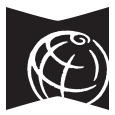Northwest Art Collection
Preview up to 100 items from this collection below. Prints, drawings and paintings by artists Mark Tobey, Kenneth Callahan, Helmi Juvonen, Robert Cranston Lee and others celebrate the Northwest. Many pieces hail from the 1934 Public Works of Art Project.
-
Pencil sketches of CCC camps: building trail - mountain lake; Orcas Island, Wash.
Identifier: spl_art_N779Pe06
Date: 1934
View this item -
-
Symbolic stylistic form
Helmi Juvonen was born in Butte, Montana on January 17, 1903. She worked in many media including printmaking, painting and paper-craft. She attended Cornish College of the Arts in Seattle where she met artist Mark Tobey with whom she was famously obsessed. Although she was diagnosed as a manic-depressive in 1930, she gained wide appreciation in the Northwest for her linocut prints depicting Northwest Indian people and tribal ceremonies. She worked with a number of artists on the Public Works of Art Project including Fay Chong and Morris Graves. Over the years, her mental health deteriorated and in 1960 she was declared a ward of the state and was committed to Oakhurst Convalescent Center. She was much beloved and had many friends and benefactors (including Wes Wehr) and was able to have exhibitions despite the confinement. She died in 1985.
Identifier: spl_art_J989Sy2
Date: n.d.
View this item -
-
Pencil sketches of CCC camps: road construction - the shovel gang; Orcas Island, Wash.
Identifier: spl_art_N779Pe07
Date: 1934
View this item -
-
-
Late summer
Paul Horiuchi was born in Kawaguchi, Yamanashi Prefecture, Japan in 1906. He was a collagist, painter, and muralist. He participated in the Works Progress Administration program in Wyoming with Vincent Campanella in 1923. He exhibited in the Northwest Annual at the Seattle Art Museum in 1930. He moved to Seattle in 1946 where he and his family ran an antique shop called Tozai. He was introduced to Mark Tobey and the Northwest School of artists around this time. In 1956, he began to work in collage in addition to paint for which he became quite famous. He died in 1999.
Identifier: spl_art_H782La
Date: 1958
View this item -
Municipal Plans Commission of the City of Seattle map showing Lake Washington-Bellevue-Renton Waterfront District, 1911
Map showing proposed city improvements under the Plan of Seattle, commonly known as the Bogue Plan. Designed by Virgil Bogue, Seattle's municipal plans director, the Bogue Plan proposed a series of improvements aimed at beautifying the city and making it making it more cohesive after years of rapid growth and industrialization. The plan worked in tandem with the Olmsted Brothers new system of parks, begun in 1903, and proposed new government buildings, an improved city center and an interurban road connecting the city together. The plan was rejected by voters in 1912.
Identifier: spl_maps_2465533_17
Date: 1911
View this item -
Quillayut dugouts
Thomas Handforth was born in Tacoma, Washington in 1897. He was an etcher, author and painter. He studied under Mahonri Mackintosh Young and at the University of Washington. He is the author of a Caldecott medal winning children’s book called "Mei Li" about a young girl in China, set during Chinese New Year. The book is full of illustrations of China where Handforth lived and visited.
Identifier: spl_art_H192Qu
Date: 1929
View this item

